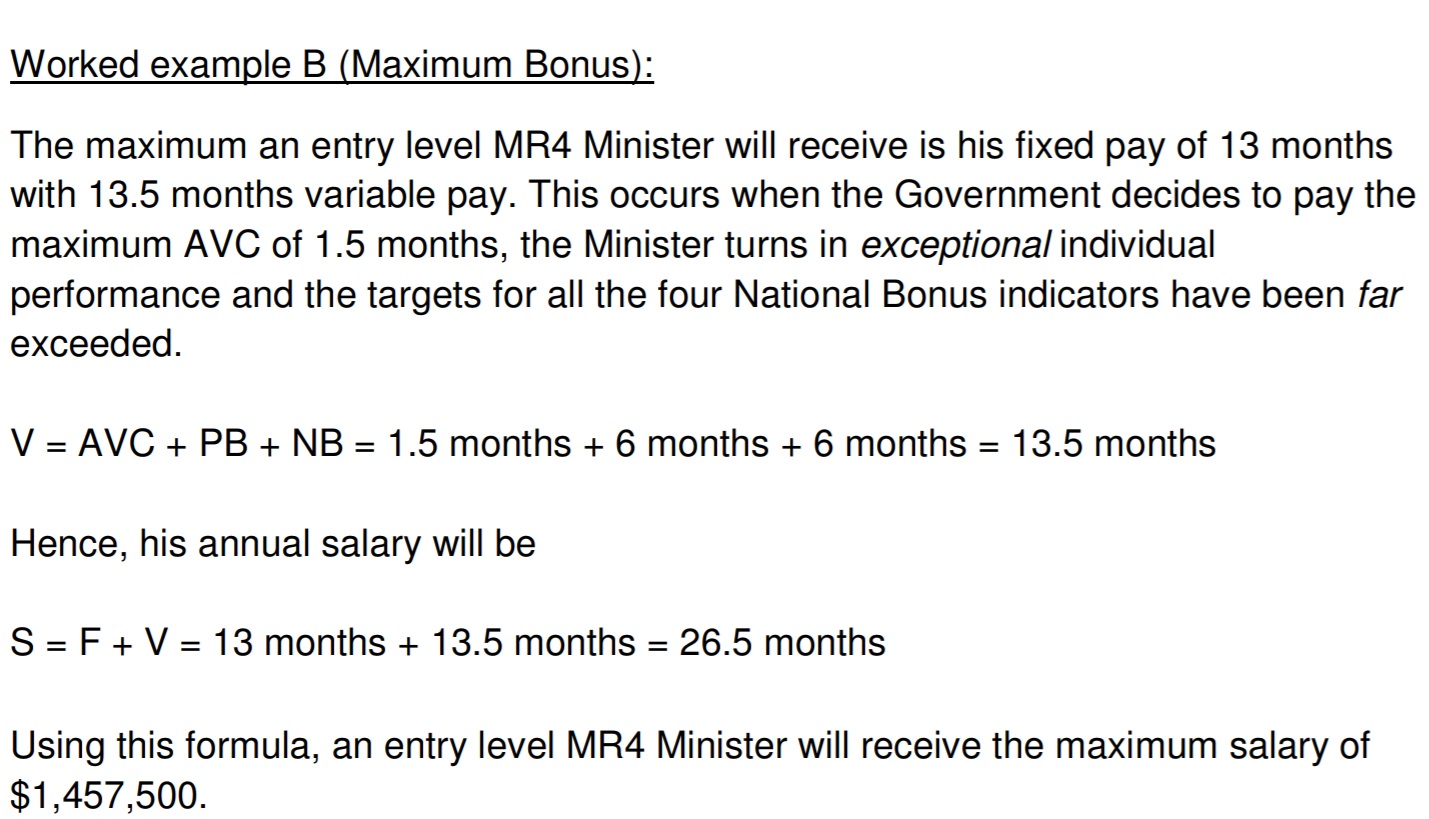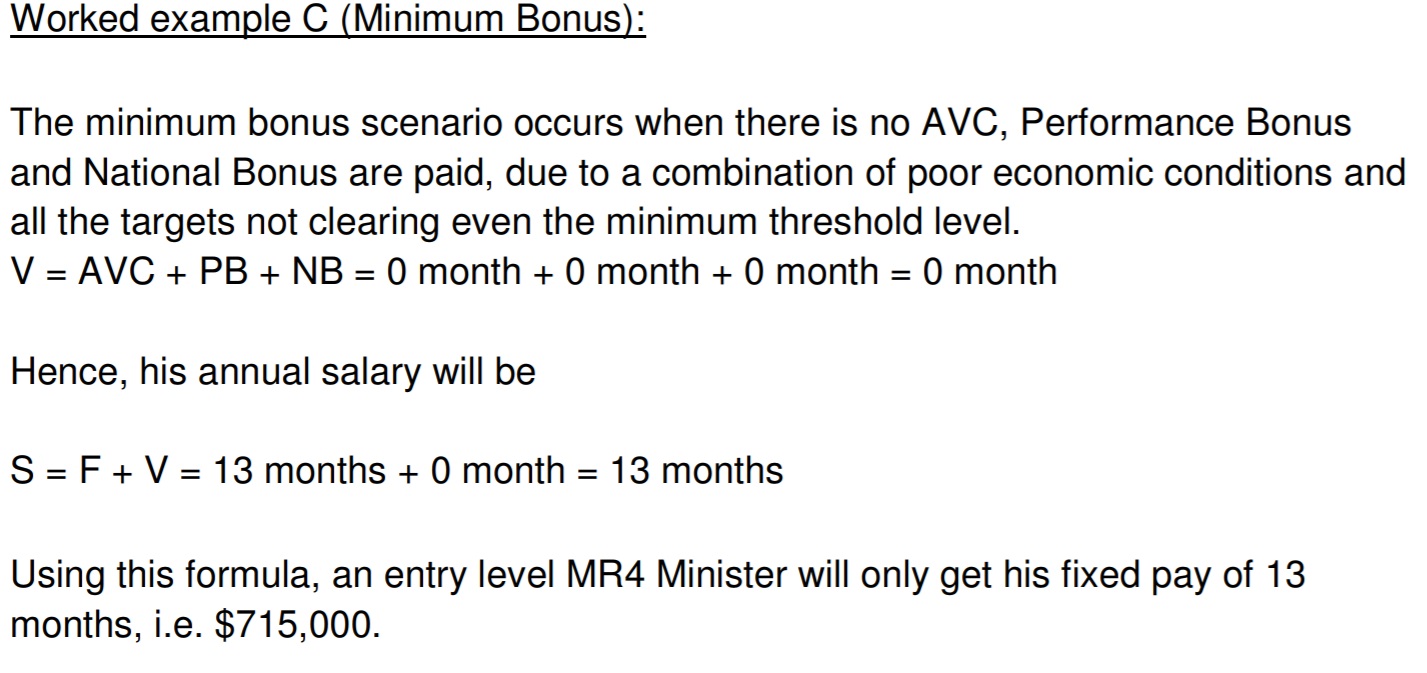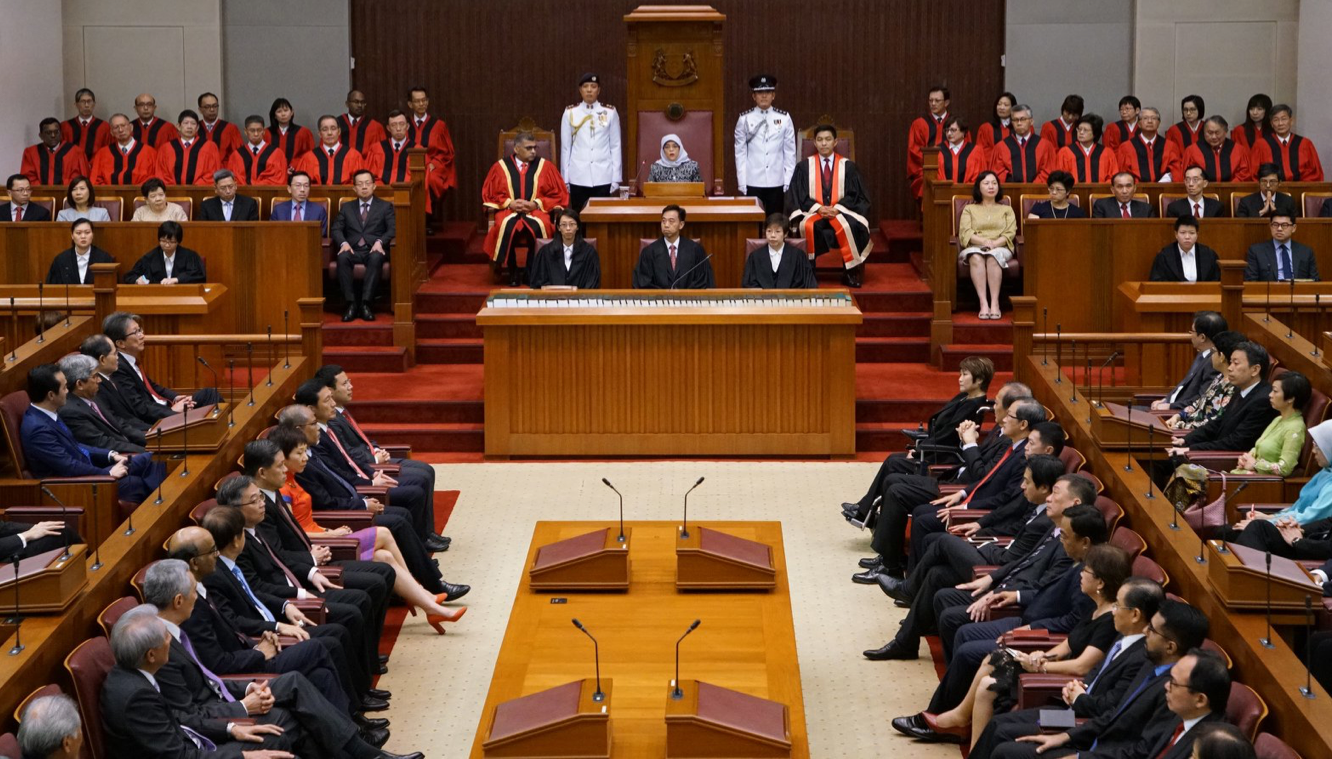Deputy Prime Minister Teo Chee Hean took some time to explain the salary structure of Singapore's ministers in Parliament on Monday, Oct. 1.
Background: current structure in place since 2012
He reminded everyone that the current ministerial pay structure was put in place after the release of an independent committee's 2012 White Paper titled "Salaries for a Capable and Committed Government".
For entry-level ministers, the total annual salary of $1.1 million was calculated based on a "market reference", minus a 40 per cent "discount", to reflect the spirit of public service.
Next, the committee divided the amount between fixed and variable pay.
[related_story]
Fixed pay
This is made up of:
This makes up 65 per cent of the annual salary.
Variable pay
This is made up of:
The committee had recommended that a "significant" part of the annual salary be variable.
This makes up 35 per cent of the annual salary.
Hence, your total:
S$1.1 million entry-level figure is "norm", based on "norm" bonus structure
And how does this square with the S$1.1 million "norm" figure? It's based on the following:
This, of course, means that some ministers can earn more or less than S$1.1 million.
Factually, a Singapore government initiative dedicated to setting the record straight on matters related to government policies or matters of public concern, noted that "if the minister doesn’t do well – and if the economy doesn’t do well – he may get well below $1.1 million".
In his reply to the parliamentary questions filed on this by MP Alex Yam and NCMP Leon Perera, DPM Teo shared this nifty breakdown of averages and ranges of bonuses between 2013 and 2017:
Performance bonuses ranged between 3 and 6 months over the period.
The average performance bonus given out over the period: 4.3 months
National bonuses ranged between 3.4 and 4.9 months over the period.
The average national bonus given out: 4.1 months
Annual variable component ranged between 0.95 and 1.5 months over the period.
The average AVC given out: 1.3 months
If all the stars aligned — meaning that the minister was the top performer for a particular year (between 2013 and 2017) and that the economy was booming, he or she would have made:
This is highly unlikely as there are three variables — the range of performance bonuses, the range of national bonuses, and the range of annual variable component — that was spread out across five years.
And what is the minimum pay that a minister could have earned between 2013 and 2017?
So if the minister is the worst-performing minister for the particular year and that the economy was less stellar during a particular year, he or she would (still) have been paid S$1.1187 million.
So how do these salary numbers compare to the maximum and minimum estimates of the independent committee's 2012 White Paper?
 Source: 2012 White Paper on Salaries for a Capable and Committed Government.
Source: 2012 White Paper on Salaries for a Capable and Committed Government.
 Source: 2012 White Paper on Salaries for a Capable and Committed Government.
Source: 2012 White Paper on Salaries for a Capable and Committed Government.
A minister's absolute maximum salary from 2013 to 2017 is unlikely to reach our calculation of S$1.397 million per year.
This means that even the best-performing minister in a fantastic economic year (in the past five, at least) did not manage to approach the independent committee's maximum salary estimates of S$1.4575 million in 2012.
On the other hand, a minister's absolute minimum salary from 2013-2017 is unlikely to be lower than S$1.1187 million per year.
This means that the worst performing minister in a lacklustre year is earning much more than the independent committee's minimum salary estimate of S$715,000 back in 2012.
Now, in case you're still interested, here's how the various bonuses are derived:
1) Individual performance bonus
This is determined by the Prime Minister, consulting senior members of Cabinet and considering the work that each office-holder performs.
His or her contributions in Cabinet to broader national issues are also taken into account.
Teo explained that while some ministers held more than one portfolio, this did not mean that they received multiple salaries.
The average individual performance bonus over the past five years was 4.3 months.
2) National bonus
This is determined by four factors:
- Real median income growth rate of Singaporeans.
- Real growth rate of the lowest 20th percentile income of Singaporeans.
- Unemployment rate of Singaporeans.
- Real GDP growth rate.
The average national bonus over the past five years was 4.1 months.
3) Annual Variable Component
This is the same amount received by all civil servants.
The average AVC over the past five years was 1.3 months.
Prime Minister's performance bonus is 2x national bonus
Although the Prime Minister determines everyone's individual performance bonus, there isn't anyone to decide his, so he by default gets twice the national bonus instead.
This, DPM Teo says, abides by the principle of making the PM's pay subject to performance.
And since 35 per cent of the PM's salary still has to fall under variable pay, instead of fixed pay, his "normal" salary is set at twice the value of an entry level minister, at S$2.2 million.
This is what his norm would look like:
Salary structure discussed previously
Although ministerial salaries are a perennial topic of interest, Non-Constituency Member of Parliament Leon Perera kicked off the latest round of discussion with a question he filed on performance bonuses.
Prime Minister Lee Hsien Loong revealed that office-holders received an average of more than four months of performance bonus per year between 2013 and 2017, in a written reply on Sept. 10.
Government website Factually, dedicated to providing information on policies or matters of public concern, debunked rumours on Sept. 16 about the PM's salary and the transparency of the salary structure.
And earlier this year, during the Budget, DPM Teo said ministerial salaries will be frozen for the next half-decade.
Now you know.
Top image from Prime Minister Lee Hsien Loong's Facebook page.
Content that keeps Mothership.sg going
?
What was the last thing you used this place for? (Somebody said paktor, meet boys?) This is what you can do these days!
?
All the restaurants you ever wanted to try on a massive discount! Did somebody say 'Pince and Pints'?
?
Have a little money but can't help being kinda lazy? You can still invest using this.
?
This was not part of CIP.
If you like what you read, follow us on Facebook, Instagram, Twitter and Telegram to get the latest updates.
